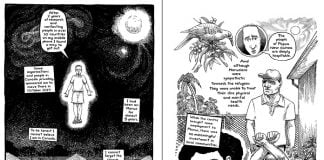Review: Beautiful Kate
Directed by Rachel Ward, In cinemas now
RACHEL WARD’S film Beautiful Kate was hailed by some as a breakthrough moment for women in Australian cinema. The renowned female director has created a brave, driven film that tackles difficult issues of adolescent sexuality, they said.This in a climate of social conservatism that saw Bill Henson devoured by the media and politicians alike.
Unfortunately, despite all that this complex (and beautifully shot) film promises, it ultimately only serves to reinforce the sexist ideas that underpin most storytelling about Australian families.
Beautiful Kate is the story of Ned, played by Ben Mendelsohn, and his dying father Bruce (Bryan Brown). Ned returns to the decaying outback town of his childhood after twenty years spent living as a writer in the city.
The film was adapted from a book by American novelist Newton Thornburg that was originally set in the outskirts of Chicago. Ward translated the novel to an Australian context, the Flinders Ranges in South Australia.
The film opens as Ned and his much younger girlfriend Toni (Maeve Dermody) lurch towards his hometown. The mix of desperate heat, poverty and racism, targeted at the local Aboriginal population, is on display from the opening frame, as Ben and Toni drag down the town’s main street abusing the locals.
Beautiful Kate lays bare the tensions of gender and sex in family relationships. From the point of Ned’s return, the family’s secrets begin to unravel in the face of Bruce’s impending death.
We follow Ned’s childhood flashbacks as he remembers his romantic relationship with Kate, his twin sister. Ward wishes to make this sexual tension the centrepiece of the film, but time and again it is the broader question of gender roles within the family that comes to the fore.
Patriarch
Ned’s memories (and his presence in his old hometown) are dominated by the influence that abusive family patriarch Bruce had on Ned and Clive’s conception of manhood.
Indeed, Ned replicates Bruce’s approach to women. It is Ned’s violence and dismissive attitude that drives Toni to abandon the family reunion after little more than two days in town. She leaves the family home and the film under a hail of abuse from Ned, who chases her and the men who give her a lift—men who happen to be from the local Aboriginal community.
Toni’s departure exposes the promise—and, more tellingly, the failures—of the film. Ward highlights the racism and sexism that underpin Ned’s reactions to Toni’s departure, but she still casts Ned as the hero of the scene. Ned is trying to rescue Toni, the fallen woman, from the grasp of the ill-meaning local men. Toni is gone, and never spoken of again—little more than window dressing from the first half of the film.
Ned looks for redemption in the advice of Sally, the only character who seems to have repaired her life from the fractures of their youth. She is happy to lay the blame for Ned’s dysfunction at Kate’s feet. Sally portrays Kate as a temptress, a sexual being who was only able to relate to the world through her ability to seduce her brothers.
Sally offers no caveats about Kate’s own experience of the isolation of outback life, or the tyrannical rule of her father, who only ever noticed his sons. According to Sally, Kate’s seductions were a product of her twisted personality, and were the family’s undoing.
Female characters
The film returns to this one strong, central female character—Sally, the sister who is supposed to redeem the fraught family history. She works with local Aboriginal children, she cares for her dying father and she, Ned tells her, is the glue that holds the family narrative together.
But she is little more than a bit player in the film, leaving town for the majority of proceedings and returning only to offer Ned his penance. She may be likeable but she holds none of the allure of the complex male characters Bruce and Ned.
Rachel Ward’s Beautiful Kate is a troubling tale that reveals the tensions that plague a family living in isolated regional Australia.
When all is said and done however, Beautiful Kate does little more than replicate the sexism and racism that it so brutally depicts. Women are consigned to the margins of the film, emerging only to tempt or redeem the male characters. The local Aboriginal community exists either to be feared or to be saved by missionary-like assistance from Sally.
This is a beautiful, powerful film—but Ward relies on dangerous stereotypes to create dramatic tension.
By Ernest Price





